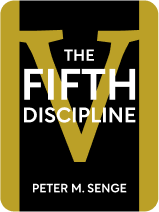

This article is an excerpt from the Shortform book guide to "The Fifth Discipline" by Peter M. Senge. Shortform has the world's best summaries and analyses of books you should be reading.
Like this article? Sign up for a free trial here.
What is “systems thinking”? In what way is systems thinking superior to the conventional cause-and-effect pattern of thinking?
Systems thinking is a non-linear pattern of thinking that relies on feedback loops. Systems thinking enables you to see the big picture of any situation or event and predict how it will unfold in the future with better accuracy.
Here’s why you should think in loops instead of lines.
What Is Systems Thinking?
People naturally think in linear, cause-and-effect relationships because they’re clear and easy to understand. However, systems thinking relies on feedback loops. This means when you take an action, that action creates some effect; that effect eventually circles back around and influences the cause (you), often in an unexpected way. Studying feedback is how you see the effects of your actions on the entire system, rather than just the part of it your decision directly altered.
One example of a feedback loop is an investment bubble: Investors overvalue a company or industry and invest heavily in it, which drives up its value. That causes others to overvalue it even more and invest even more, creating a loop of accelerating investment. However, this loop doesn’t last forever: Eventually, market forces catch up with the investment, the bubble bursts and the value plummets, and those investors unexpectedly lose a great deal of money.
Systems thinking through feedback loops could prevent you from being one of those unlucky investors—an accurate view of the market as a whole, rather than a narrow view of a single skyrocketing investment, could help you avoid bad investments or cash out before the bubble bursts.
What Does “Feedback” Mean Here?
Recall that Peter Senge is a systems scientist, and therefore a lot of the vocabulary in The Fifth Discipline comes from systems science rather than from business or marketing. In this case, he’s discussing feedback systems, which are systems that monitor their own outputs and make changes to produce the desired result. As an example, the human body has numerous feedback systems regulating it, such as producing sweat if it detects that your body temperature is too high.
At its most basic, a feedback system needs a sensor to detect output, a control center to make necessary adjustments, and an effector pathway so that the control center’s decisions can be put into practice. In an organization such as a business, various metrics serve as the sensors, and the decision-makers serve as the control center, making adjustments to the organization based on those metrics.

———End of Preview———
Like what you just read? Read the rest of the world's best book summary and analysis of Peter M. Senge's "The Fifth Discipline" at Shortform.
Here's what you'll find in our full The Fifth Discipline summary:
- Why an organization should encourage its members to constantly learn and develop their skills
- The five disciplines for creating an evolving organization
- Why you should constantly assess and update what you think you know






